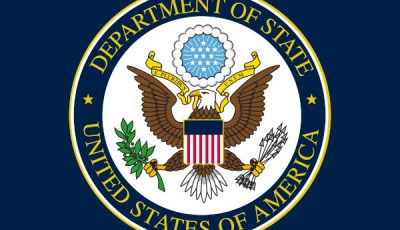Does Porn Cause Sexual Violence? The Evidence Suggests Not
 EAST LANSING, Mich. — A recent study published in the academic journal Crime & Delinquency suggests that sexual offenders rarely replicate what they see in pornography as a driver of sexual aggression.
EAST LANSING, Mich. — A recent study published in the academic journal Crime & Delinquency suggests that sexual offenders rarely replicate what they see in pornography as a driver of sexual aggression.
Led by Michigan State University School of Criminal Justice researchers, the research suggests that “sexual scripts learned through pornography use are not present in patterns of sexual offending behavior,” reports Craig Harper in his recurring column “Articles of Heterodoxy” for the Psychology Today directory website.
When sexual violence is in question, it is common for people to assume that sexual deviancy and such behaviors are primarily learned. Pornography is often cited as a driving factor, with general assumptions made that depictions of particular fetishes, objectification and aggression are depicted in scenes. Others argue that porn drives misogynistic and criminal offense-related attitudes that are tied to their crimes. The research conducted by the Michigan State team suggests something different, though.
Amanda Isabel Osuna, a doctoral candidate at the university, is the lead author of the study. Osuna co-authored the study with her advisor, Dr. Karen Holt, an assistant professor of criminal justice at the university.
“We often do not listen to persons incarcerated for sexual crimes,” Osuna said. “I think it is important to hear what their thoughts and experiences are so that we can better understand why they have offended and how to prevent these offenses from happening again.”
“Many people often make assumptions about the role pornography may play in sexually offensive behaviors,” Holt noted. “It is important to study from an academic perspective so that we can evaluate these claims and understand what the evidence tells us. Asking individuals who sexually offend about their experiences and perceptions is one way that we can learn about the role of pornography in their sexual development.”
Holt and Osuna interviewed 101 men convicted of sexual offenses during which they were incarcerated in the state penal system. Each interview lasted up to 45 minutes. The topics that were covered include the subject’s experiences with porn, including their history of how old they were when seeing highly sexually explicit material.
Other subjects include discussions over the types of material watched, how often their content consumption occurred prior to committing their offenses and being incarcerated, and how watching porn may have shaped their emotional self, their fetishes and fantasies, and their sexual behaviors and relationships. According to Holt and Osuna, interviews like these “allow for the examination of diverse perspectives and experiences of research participants and is especially useful for organizing and summarizing key concepts in larger data sets.”
“The takeaways from this [study] are that 1) the men interviewed are aware of how pornography could impact them upon release, and 2) that from the men interviewed, most are not using pornography to lure or groom victims,” Osuna said. “The take-home message for me would be that pornography use has the potential to affect behavior, but it is not the only factor to be considered.”
“As with all qualitative work, our research cannot be generalized to other men incarcerated for sexual crimes. We still need to understand if pornography use is correlated to reoffending,” Osuna added.
Other research has arrived at similar conclusions. The University of Texas at San Antonio (UTSA) and Stetson University in Florida, in a paper published in the summer of 2020 for the academic journal Trauma, Violence, & Abuse found that pornography does not cause violent sex crimes. Harper referenced this study in his Psychology Today column, as well.
The researchers, Chris Ferguson, a professor of psychology at Stetson University, and Richard Hartley, chair of UTSA’s Department of Criminology and Criminal Justice, conducted a meta-analysis and examined 50 studies that found a correlation, were experimental, or were based on population cohorts that explored associations between porn consumption and sexual aggression during the past four decades.
Hartley and Ferguson found that there are scores of poorly designed studies that “tended to be more likely to support a link between pornography and sexually assaultive behavior.”
“During the past few years many states have declared that pornography is a public health crisis,” said Dr. Ferguson in a statement announcing the publication of the study. “Dr. Hartley and I were curious to see if evidence could support such claims—at least in regard to sexual aggression—or whether politicians were mistaking moral stances for science. Our evidence suggests that policymakers should examine other causes of sexual aggression and that beliefs about pornography may be driven more by methodological mistakes than sound science.”
There is also no evidence showing that pornography is a public health crisis. Politicians, especially social conservatives and right-wing populists, have cited flawed research to claim porn is a gateway to violence — as well as a hotbed of human trafficking. These same right-wing groups also claim that left-wing politicians and those who politically agree with comprehensive sexual education being taught in schools are somehow “groomers” pushing an agenda of moral decay.
There are other studies suggesting that porn is rarely a driver of sexual violence. In fact, some researchers have found evidence that anti-porn “support groups” that are active on online social networks like Reddit or other internet forums actually promote misogynistic and potentially sexually violent behaviors. Anti-porn groups, nonetheless, advocate for toxic masculinity characteristics in society. The study published by Holt and Osuna speaks volumes, further contributing evidence that factors aren’t singular when contributing to violence.
Bloody hands photo by NEOSiAM 2021 from Pexels.













